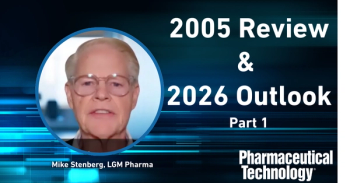
- Pharmaceutical Technology-05-02-2010
- Volume 34
- Issue 5
Validation by Numbers
A book helps statistics novices prepare to comply with the US Food and Drug Administration's draft guidance on process validation.
How many samples should I take? Is the assay method validated? Is this result really out of specification? Should I adjust the tablet weight? Is this process under control? Should I reject the batch? The pharmaceutical industry has always faced questions such as these, and they may be answered best from a statistical perspective.
Validation by Design, Lynn Torbeck, PDA Books, Bethesda, MD, 2010, 200 pp., ISBN: 193372238X
Unfortunately, many quality-assurance workers and production managers charged with answering these types of questions do not have an adequate working knowledge of statistics. They find it difficult to answer these questions and to understand answers that statisticians provide.
The book Validation By Design: The Statistical Handbook for Pharmaceutical Process Validation, by Lynn Torbeck, a member of Pharmaceutical Technology's Editorial Advisory Board, contains information useful to people who are new to statistics and to employees responsible for implementing statistical techniques that monitor and control pharmaceutical production processes and quality-assurance activities. The book was written specifically to address the statistical issues contained in the US Food and Drug Administration's November 2008 draft guidance for industry titled Process Validation: General Principles and Practices, which is reproduced in its entirety in an appendix. Torbeck's book can form the basis for interdepartmental discussions and for an understanding of the statistical techniques that are consistent with the intent of the guidance.
An important feature of the book is its interpretation of the guidance's statistical implications. The author rewrote the guidance's statistical content as a series of self-audit questions that cite specific lines in the guidance document. For example, lines 27–29 of the guidance state, "The lifecycle concept links the product and process development, qualification of the commercial manufacturing process, and the maintenance of the process in a state of control during routine commercial production." The associated self-audit question asks, "Is the process in a state of control during routine commercial production?" The question is followed
by a brief explanation of the term "state of control" and a reference to the chapter of the book that describes the concept. This self-audit format leads the reader through the various statistical techniques that enable compliance with various sections of the guidance.
A second important feature of the book is the chapters that elucidate statistical methods and concepts. Each of these chapters is written in a standard format that contains subtopics such as "Other Names," "Acronyms," "Definition," "Related Topics," "Calculation," "Illustration," "Cautions," "Advice," and "References." This consistent categorization enables the reader to understand the statistical concepts and decide whether their use is appropriate in a particular situation. The chapters explain simple statistical concepts such as average and relative standard deviation, as well as complicated ones such as control charts, root-cause analysis, process mapping, interquartile range, and Plackett–Burman designs.
The book should prove useful to employees charged with developing a self-audit program to measure the company's level of compliance with the process-validation guidance. It also would be a solid basis for writing validation protocols.
The book cannot be considered an introductory text about statistics because the topics are not presented in depth. Still, its references provide necessary information for readers who wish to delve further into any of the subjects. According to the author's preface, the book is for "those engaged in meeting the requirements of the FDA process-validation guidance." The questions that interpret the guidance, the author's explanations, and the chapters about statistical methods and techniques should do much to help personnel meet those requirements.
Russell Madsen is president of The Williamsburg Group, 18907 Lindenhouse Rd., Gaithersburg, MD 20879, tel. 301.938.4266, fax 301.869.5016,
Articles in this issue
over 15 years ago
Pharmaceutical Technology, May 2010 Issue (PDF)over 15 years ago
Inside USP: The USP Conventionover 15 years ago
Health Reform to Transform Coverage, Costsover 15 years ago
Statistical Solutions: Bergum's Method Recognizedover 15 years ago
Q&A with Schenk AccuRate's Chad Lorensenover 15 years ago
A Very Brady FDAover 15 years ago
Experimental Considerations in Headspace Gas Chromatographyover 15 years ago
The Lilly Wayover 15 years ago
Exploring Catalysis in API Synthesisover 15 years ago
Skin Permeation of Rosiglitazone from Transdermal Matrix PatchesNewsletter
Get the essential updates shaping the future of pharma manufacturing and compliance—subscribe today to Pharmaceutical Technology and never miss a breakthrough.




